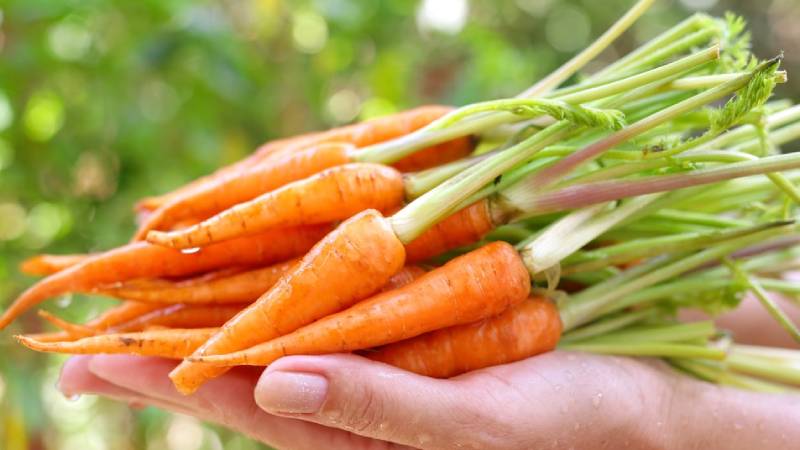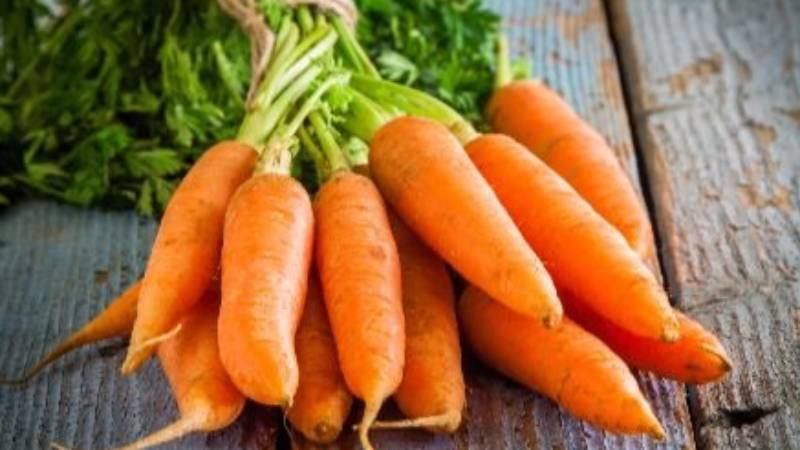How Many Baby Carrots In A Pound ? The answer to this question may seem obvious, but many people don’t know the answer. Here’s a quick guide on how many baby carrots there are in a pound.
After 1 day of research, I found out that there are 12 baby carrots in 1 pound
See Also:
What Is Baby Carrot?
BABY CARROT:
The immature roots of the carrot plant are sometimes harvested simply as the result of crop thinning but are also grown to this size as a specialty crop. Certain cultivars of carrots have been bred to be used at the “baby” stage. One such cultivar is ‘Amsterdam Forcing’. This process was developed at Beechnut Farms, bought by Kraft Foods in the 1970s, and is now used by some of its product suppliers.
Their flavor profile changes from that of a root vegetable to a more delicate sweetness resembling that of parsnip or artichoke. Baby carrots are also popular for people who prefer smaller bites when eating because they can be eaten whole without being cut into pieces.
“BABY-CUT” CARROTS
A Californian carrot farmer has been credited with creating baby carrots to ensure that children — who liked their vegetables sweeter and crunchier than adults did — could enjoy more fresh produce.
As of 2006, nearly three-quarters of the fresh baby-cut carrots produced in the United States came from Bakersfield, California. Bolthouse Farms and Grimmway Farms are currently the world’s two largest growers, processors, and shippers of baby-cut carrots.
Are Baby Carrots The Same As Regular Carrots?
Baby carrots found in U.S. and U.K. supermarkets are really what the industry call “baby cuts” – a smaller, sweeter carrot that’s been specifically bred for baby foods sells well, but infants don’t digest them as easily as adults so parents have switched to different types of baby food over the years
How Many Cups Are 2 Carrots?
We found that it took about 2.75 medium carrots to make a cup of grated carrots. When sliced or chopped, only 2 carrots were needed to reach the 1 cup mark.

Benefits Of Carrots
Carrots and also baby carrots have many benefits. Eating at least six servings a day could lower the risk of some cancers, including ovarian and colon.
REDUCED RISK OF CANCER
- Diets rich in carotenoids might help protect against cancer. This fits with what has been found by studies and it seems like the suggestion is a reasonable one.
- This includes the prostate, colon, and stomach.
- Women with higher levels of circulating carotenoids may also have a lower risk of breast cancer.
- Research has shown that carotenoids could prevent lung cancer, but new research has not found a correlation.
LOWER BLOOD CHOLESTEROL
- Eating too many high-cholesterol foods can increase your risk for heart disease. Intake of carrots has been shown to lower cholesterol levels.

WEIGHT LOSS
- Carrots are an excellent low-calorie lean vegetable that can increase fullness and decrease calorie intake in the following meal. Carrots are often used as a weight-loss aid, and for good reason.
EYE HEALTH
- Individuals who are low on vitamin A levels may experience night blindness, which can be partly relieved by eating carrots.
- Carotenoids may also help you prevent age-related macular degeneration.
Some Other Related Questions
How many Calories In 1 Pound Of Carrots?
There are 186 calories in 1 pound of Carrots. Calorie breakdown: 5% fat, 87% carbs, 8% protein.
How Much Money Is Pound Of Carrots?
Carrot prices range from 49 cents to $4 a pound.
Is it impossible to cry while eating a baby carrot?
You can’t cry while you eat them. A baby carrot can’t make you cry when you eat it because it’s too crunchy.
Conclusion
This is an article about how many baby carrots in 1 pound. I hope it will help you

I am Paula D. Gonzales. As a Product Designer, I have worked with companies like AMC Culinary Cookware, counting over 6 years of professional experience in the cookwares field.
In this blog, I will review various cookware products such as cookware benefits, non-stick safety, healthy cookware, taste, durability, PFOA free, and induction cookware. My goal is to build a rigorous evaluation of various cookware products so that you and I can better understand the differences in the products and their relative benefits.
